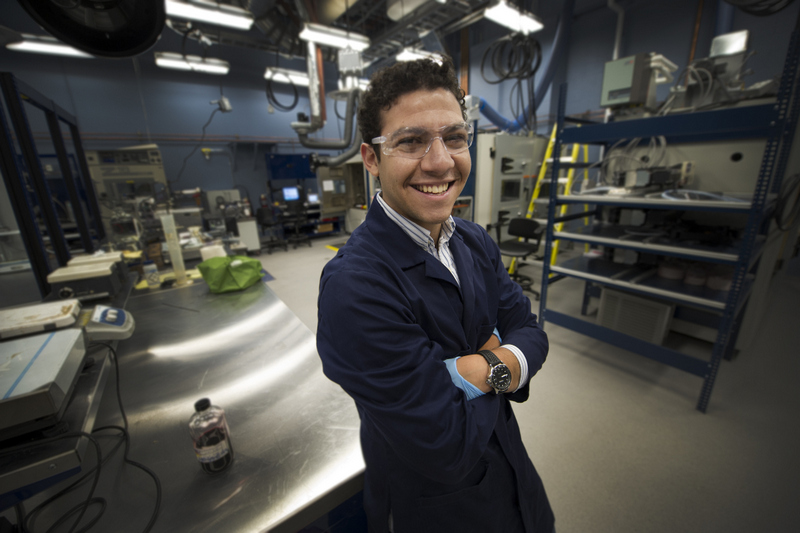Enhanced extraction in N.L.'s first heavy oil field

 Researchers at Memorial are looking towards the future to come up with new enhanced oil recovery (EOR) methods to extract even more oil from sites like the unique Hebron Field.
Researchers at Memorial are looking towards the future to come up with new enhanced oil recovery (EOR) methods to extract even more oil from sites like the unique Hebron Field.
The province's first heavy oil field, the Hebron Project is the fourth major offshore development in Newfoundland and Labrador. It is estimated there are 2,620 million barrels of oil (MBO) in place, of which more than 700 MBO are considered to be recoverable. First oil is expected in 2017 and represents a fundamental asset for the energy growth of the province.
Enhanced oil recovery, also called tertiary recovery, is the implementation of various techniques for increasing the amount of crude oil that can be extracted from an oil field.
Using EOR methods, an estimated 5-10 per cent more original oil in place can be extracted compared to primary and secondary production. The effectiveness of the EOR method varies depending on the reservoir characteristics and operational challenges.
“Hebron crude oils in the Ben Nevis formation are denser compared to those from other nearby offshore fields in the province,” said Luis Valencia, a Venezuelan graduate student with the Department of Earth Sciences, Faculty of Science. “Also known as heavy oil, it is more viscous and limits the enhanced oil recovery methods that can be used.”
Mr. Valencia is involved in the first project designed in Memorial’s new Hibernia EOR lab aimed at understanding the unique characteristics of the Hebron Field. He is jointly supervised by Dr. Lesley James, assistant professor, Department of Process Engineering, Faculty of Engineering and Applied Science, and the Chevron Chair in Petroleum Engineering, and Dr. Karem Azmy, professor, Department of Earth Sciences, Faculty of Science. Their interdisciplinary research also includes Dr. Thormod Johansen, jointly appointed professor, Department of Process Engineering and Department of Earth Sciences, and Dr. Anand Yethiraj, associate professor, Department of Physics and Physical Oceanography, Faculty of Science.
“My research project involves experimentally examining polymer flooding as a potential EOR method for the Hebron field,” he said. “Polymer flooding is the initial EOR technique to be evaluated, and part of the polymers to be considered are biopolymers which are environmentally friendly EOR chemicals to improve oil production.”
Water flood technology uses water to get additional oil out of a reservoir. Polymer is a gel material added to the water to increase viscosity and further improve results of the water flood. In addition to making the water thicker, it increases friction, so it pushes the oil more uniformly through the pores in fine-grain sands of the formation.
“We are doing lab experiments using similar rocks and fluids as you would find in the reservoirs, so we are trying to mimic the same conditions and test how it will work on a small scale.”
The researcher says the fact that Hebron is not actually producing oil right now makes the process harder.
“According to the initial forecast, they will start to produce first oil in 2017 and EOR technologies could be applied in 30 years, after initial production” Mr. Valencia said. “But because it’s the first heavy oil field in the province and it’s offshore, we have to be thinking ahead. That’s the idea, to start our research now in the early stages of this field, so that it will allow Memorial to evaluate and examine efficient alternatives to the challenges of developing an offshore heavy oil field.”
The graduate student says he was encouraged to come to Canada by his mentor, the former Canadian ambassador to Venezuela.
“Venezuela is a country with a very large oil reserve, and normally people would go to Alberta to learn more,” he said. “But I wanted to come to Memorial because the research here is so new and it’s exciting to be the first one working in a field.
“I’ve also been trying to promote Memorial’s new Hibernia EOR Lab to people at home so they realize they can also come here. It’s a wonderful place and I’m really enjoying it.”